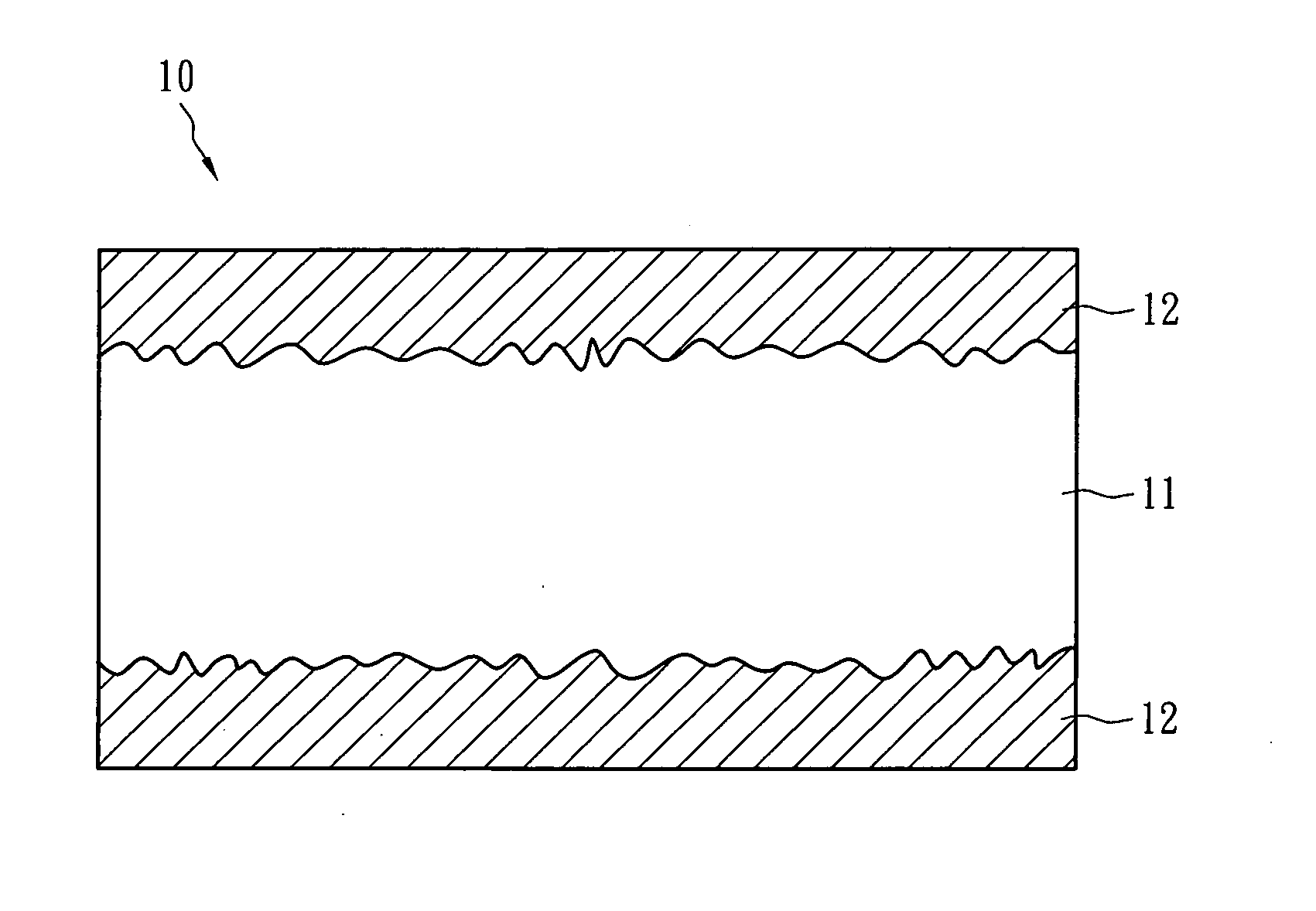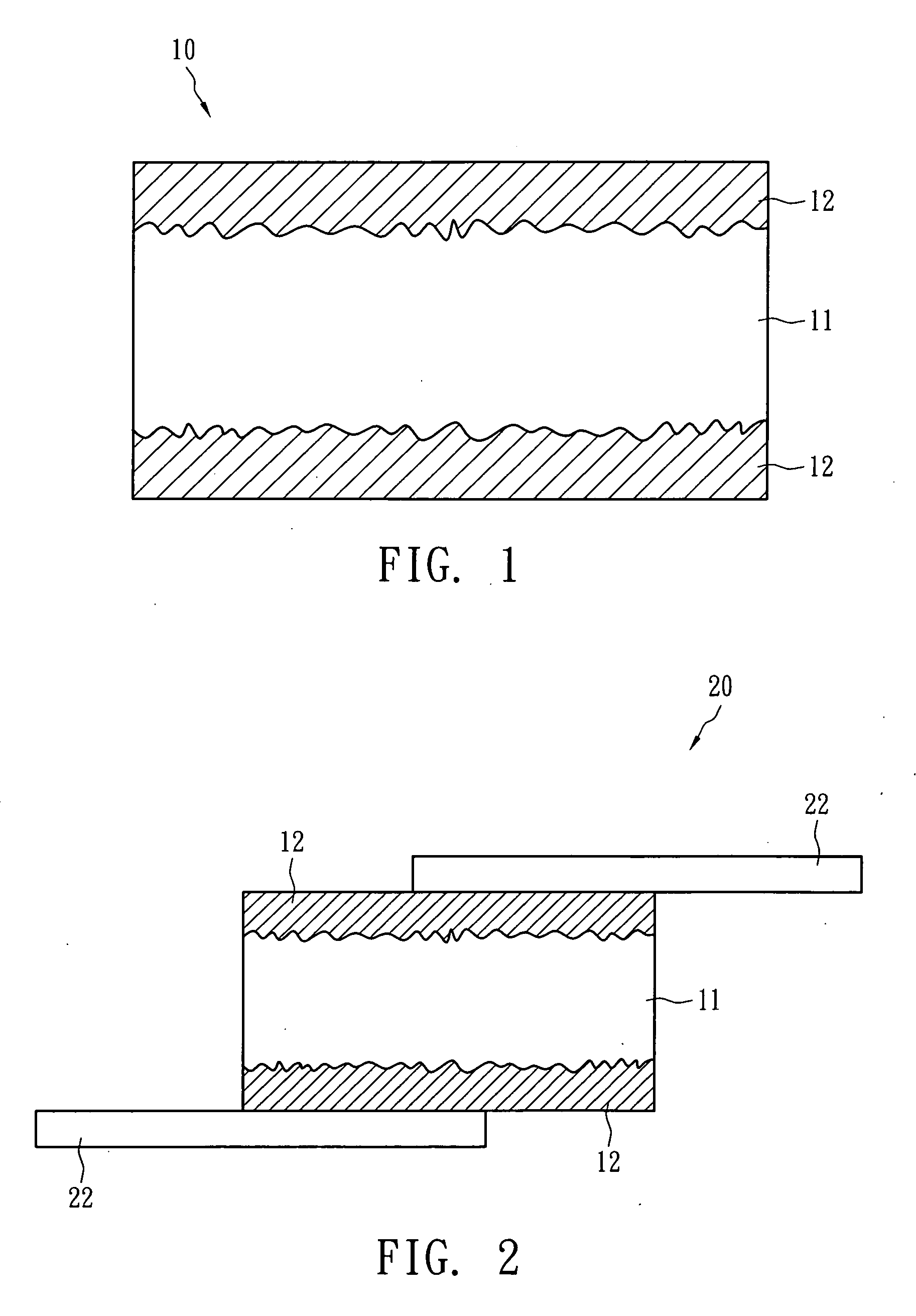Over-current protection device
a protection device and overcurrent technology, applied in the direction of resistor manufacture, current responsive resistors, varistors, etc., can solve the problems of poor adhesion of ceramic powder to polyolefin polymer, easy accumulation of filler particles, and less uniform dispersion, etc., to achieve excellent low resistance, fast tripping, and low melting point
- Summary
- Abstract
- Description
- Claims
- Application Information
AI Technical Summary
Benefits of technology
Problems solved by technology
Method used
Image
Examples
Embodiment Construction
[0021]The following describes the compositions of Example I, Example II, Example III, Example IV, Comparative Example 1 and Comparative Example 2 and the manufacturing processes of the over-current protection device of the present invention with accompanying figures.
[0022]The composition and weight (unit in grams) of the PTC material layer in the over-current protection device of the present invention are shown in Table 1 below.
TABLE 1LDPE-1HDPE-1HDPE-2BNAlNSi3N4Carbon BlackNiComposition(g)(g)(g)(g)(g)(g)(g)(g)Example I8.516.5—5———160Example II8.2—17.64.4———156Example III8.516.5——5.2——160Example IV8.2—17.6——5.4—160Comparative—8.110.2————150Example 1Comparative—9.29.73.6——33—Example 2
[0023]In Table 1, LDPE-1 is a low-density crystalline polyethylene (density: 0.924 g / cm3; melting point: 113° C.); HDPE-1 is a high-density polyethylene (density: 0.943 g / cm3; melting point: 125° C.); HDPE-2 is a high-density polyethylene (density: 0.961 g / cm3; melting point: 131° C.); boron nitride (BN)...
PUM
| Property | Measurement | Unit |
|---|---|---|
| melting point | aaaaa | aaaaa |
| particle size | aaaaa | aaaaa |
| thickness | aaaaa | aaaaa |
Abstract
Description
Claims
Application Information
 Login to View More
Login to View More - R&D
- Intellectual Property
- Life Sciences
- Materials
- Tech Scout
- Unparalleled Data Quality
- Higher Quality Content
- 60% Fewer Hallucinations
Browse by: Latest US Patents, China's latest patents, Technical Efficacy Thesaurus, Application Domain, Technology Topic, Popular Technical Reports.
© 2025 PatSnap. All rights reserved.Legal|Privacy policy|Modern Slavery Act Transparency Statement|Sitemap|About US| Contact US: help@patsnap.com



